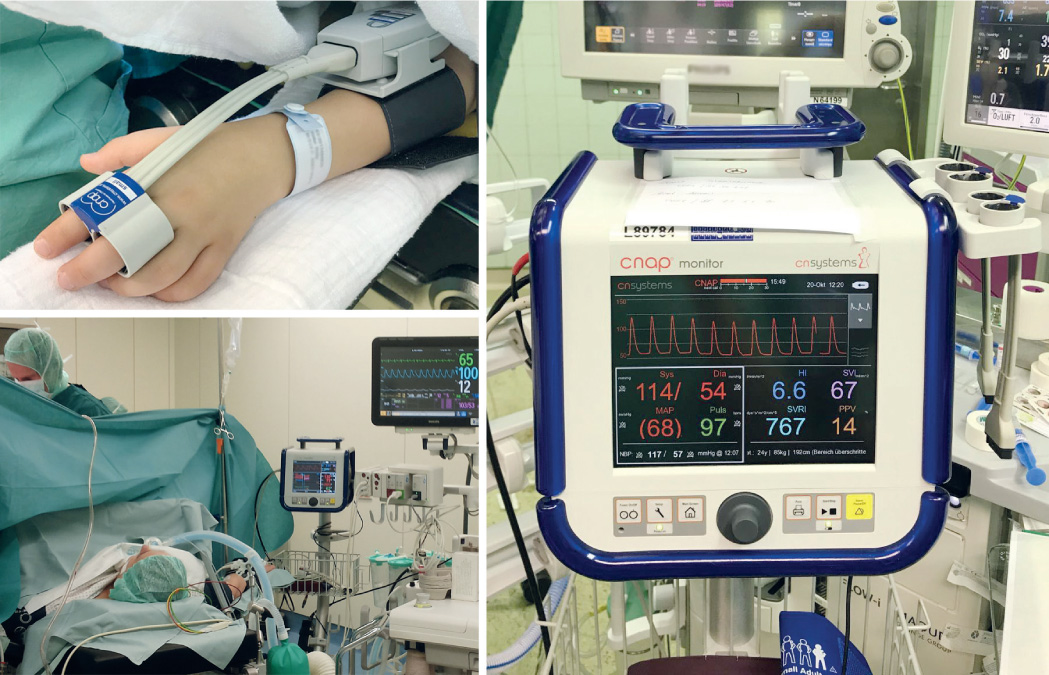ICU Management & Practice, Volume 19 - Issue 2, 2019
How effective are less invasive or even noninvasive methods?
The clinical and economic burden of post-surgical complications and the economic impact of Goal-Directed Fluid Therapy (GDFT) implementation.

Improving the quality of care by reducing post-surgical complications, decreasing mortality, and decreasing hospital length-of-stay for surgical patients while also reducing cost, is a widespread goal of health services and healthcare professionals all around the world.
In recent years, innovative concepts, approaches, and technologies have been evaluated and recommended by renowned International Societies to achieve this goal. Among these concepts are Goal Directed Fluid Therapy (GDFT) strategies, which are defined as “targeted haemodynamic and fluid management therapies using parameters such as stroke volume, cardiac output and oxygen delivery in conjunction with standard vital signs in managing patients during and immediately after surgery.”1
While there are still debates going on about the best use, many clinical studies confirm the positive effect of GDFT on patient outcome after major surgery. The reduction of the most common complications, such as wound infection, sepsis or pneumonia, have been reported to result in a decrease of morbidity and even mortality in high-risk and intermediate-risk surgeries.1,2,3 Nevertheless, the implementation of this approach in the clinical routine very often fails due to the perceived high cost for initial equipment.1,2
To obtain objective data, Manecke et al. “assessed the clinical and economic burden of postsurgical complications in the American University Health System Consortium (UHC) in order to predict the economic impact of GDFT implementation.” By comparing patients with and without postsurgical complications, they showed that out of 75,140 patients 8,421 developed one or more post-surgical complications, resulting in a morbidity rate of 11.2%.1 “In 2011 the UHC spent a total of $252 M to treat postsurgical complications in the study population.”1
Apart from showing the dramatic impact of postsurgical complications on cost, the authors also calculated the savings potential of GDFT: “After implementation of GDFT, projected gross savings would be $569-$970 per patient and $43-73 M for the entire UHC study population.”1 This implies savings of up to 29%, which easily compensate for the initial costs of the required equipment assuming approximately $300/patient.1
Patient benefit can be further expanded by using less invasive tools, which allow for the use of GDFT in a much wider patient population, including intermediate risk surgeries.3 Less invasive or even noninvasive solutions are not only associated with less risks, but also with fewer complications for the patient than invasive methods. “All of these issues are highly relevant for potential economic decision making.”2
Using the noninvasive CNAP® Monitor in intermediate risk patients undergoing hip or knee replacement, Benes et al. showed that Goal-Directed Therapy based on pulse pressure variation reduced postoperative wound infection, which is the number one complication and essential cost driver in surgical patients1, by 61%.3
“The CNAP® Monitor was found to be comparable to its invasively assessing counterparts. Given these positive factors, the CNAP® device is already widely and routinely used in many clinical institutions; therefore our study could serve as a proof of concept for this praxis.”3 With cost savings up to 77% on disposables, CNAP® is definitely a promising solution to meet the demand for improved healthcare quality at low cost.
Key points
- Goal-Directed Fluid Therapy (GDFT) is defined as “targeted haemodynamic and fluid management therapies using parameters such as stroke volume, cardiac output and oxygen delivery in conjunction with standard vital signs in managing patients during and immediately after surgery."
- Many clinical studies confirm the positive effect of GDFT on patient outcome after major surgery.
- The implementation of this approach in the clinical routine very often fails due to the perceived high cost for initial equipment
- After the implementation of GDFT, gross savings easily compensate for the initial costs of the required equipment.
- With cost savings up to 77% on disposables, CNAP® is definitely a promising solution to meet the demand for improved healthcare quality at low cost.
References:
1 Manecke et al. (2014) Tackling the economic burden of postsurgical complications: would perioperative goal-directed fluid therapy help? Critical Care,18(5):566.
2 Benes et al. (2014) Cost analysis of the stroke volume variation guided perioperative hemodynamic optimization - an economic evaluation of the SVVOPT trial results. BMC Anesthesiology,14(1):40.
3 Benes et al. (2015) Fluid management guided by a continuous non-invasive arterial pressure device is associated with decreased postoperative morbidity after total knee and hip replacement. BMC Anesthesiology, 15(1):148.





















